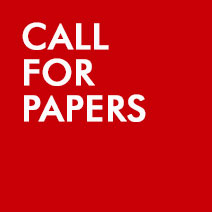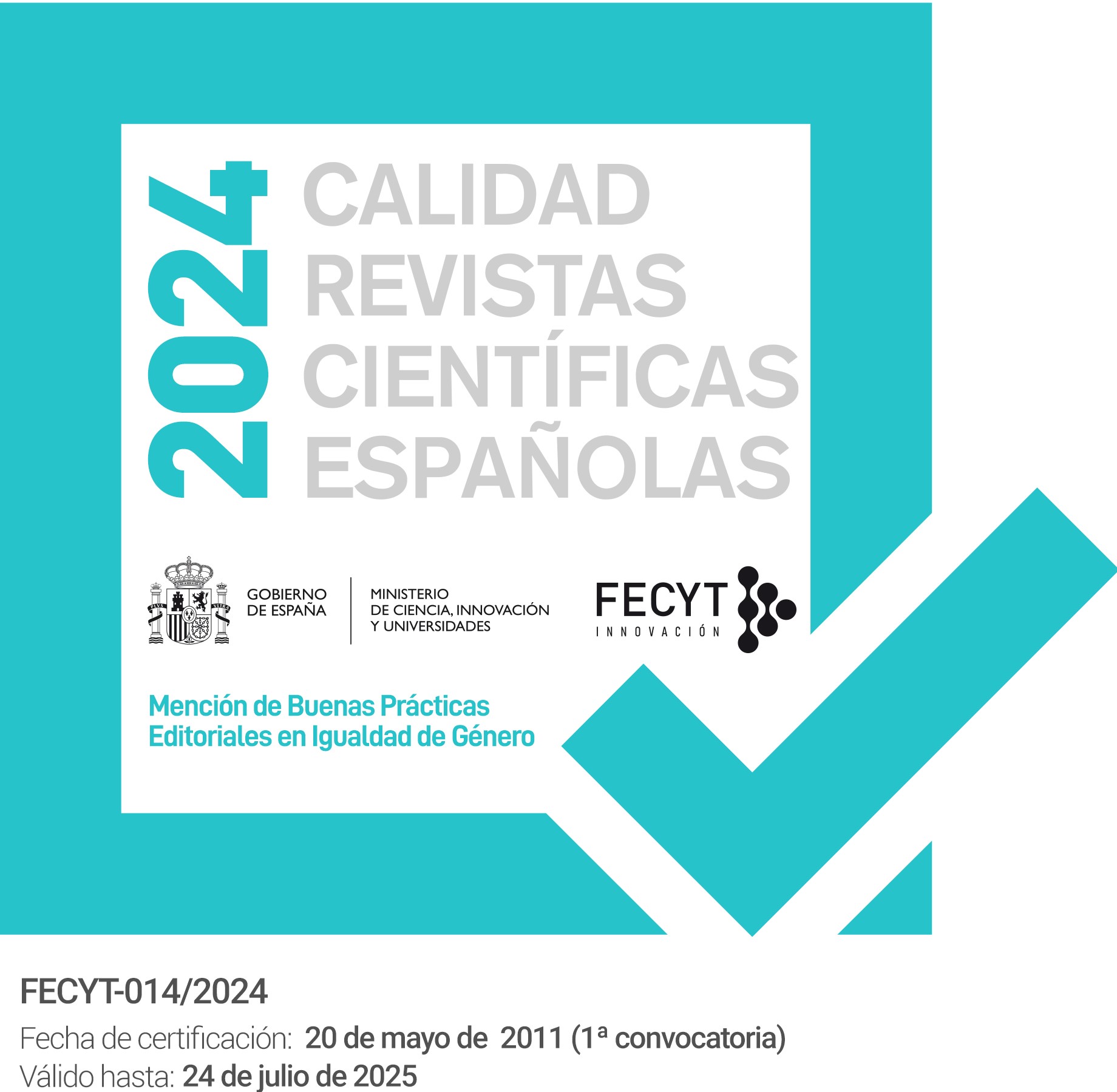La diversidad de orígenes entre lo urbano y lo rural: discurso, políticas y análisis demoespacial en España
DOI:
https://doi.org/10.14422/mig.2023.023Palabras clave:
diversidad, migraciones, políticas, despoblación, EspañaResumen
El principal objetivo de este artículo es medir la diversidad de orígenes distinguiendo entre espacio urbano y rural, en especial para los municipios con menor población. Para ello, primero se analiza el origen y la difusión del discurso sobre la diversidad cultural y se analizan las prácticas políticas sobre integración e inclusión a diferentes escalas administrativas. Posteriormente se mide la diversidad utilizando el índice de Simpson para las principales regiones urbanas y rurales de menor tamaño. Finalmente, se analizan las prácticas políticas y las consecuencias a diferentes escalas administrativas. Se consideran las 15 áreas urbanas que superan el medio millón de habitantes en 2020. Para las áreas rurales, se analizan los municipios menores de 2000 habitantes no incluidos en áreas urbanas. El análisis se realiza tanto para el conjunto de la población como desde una perspectiva generacional, comparando la diversidad entre distintas generaciones y la producida dentro de una misma generación.
Descargas
Citas
Aja, E. y Moya, D. (2008). El derecho de sufragio de los extranjeros residentes. En Anuario CIDOB de la Inmigración (pp. 64-81). CIDOB.
Bhabha, H. K. (2011). Culture’s in-Between. En S. Hall y P. du Gay (eds.), Questions of Cultural Identity (pp. 53-60). Sage. https://doi.org/10.4135/9781446221907.n4
Blanco, C. (2001). La integración de los inmigrantes. Fundamentos para abordar una políticaglobal de intervención. Migraciones, (10), 207-248. https://revistas.comillas.edu/index.php/revistamigraciones/article/view/4380
Cantle, T. (2001). Report of the Independent Review Team on Community Cohesion. HMSO.
Cantle, T. (2005). Community cohesion: A New Framework for Race and Diversity. PalgraveMacmillan. https://doi.org/10.1057/9780230508712
Cebolla-Boado, H. y González-Ferrer, A. (2013). Inmigración: ¿integración sin modelo? Alianza Editorial.
Collantes, F., Pinilla, V., Sáez, L. A. y Silvestre, J. (2010). El impacto demográfico de la inmigración en la España rural despoblada [Documentos de Trabajo, n.º 30]. Real Instituto Elcano de Estudios Internacionales y Estratégicos.
Comisión Europea. (2020). Plan de Acción en materia de Integración e Inclusión para2021-2027. COM (2020) 758 final.
Comité de las Regiones. (2010). Integración de los inmigrantes: integración de los inmigrantes en las zonas urbanas. Grupo de trabajo sobre Integración de los inmigrantes. CoR.
Consejo de Europa. (2017). Bridging the equality, diversity and inclusion agendas: backgroundpaper. Intercultural Cities. Council of Europe.
Domingo, A., Galeano, J. y Bayona, J. (2021). La migració estrangera a Barcelona: de la crisis financera del 2008 a la pandèmia de 2020. Barcelona Societat, revista de coneixement i anàlisi social, (28), 26-40.
Durkheim, E. (2012). La división del trabajo social. Minerva Ediciones.
EMN. (2017). Ad-Hoc Query on Integration measures regarding language courses and civic integration – Part 2. EMN.
Fainstein, S. (2005). Cities and Diversity: Should we want? Can we plan for it? Urban Affairs Review, 41(1), 3-19. https://doi.org/10.1177/1078087405278968
Faist, T. (2009). Diversity – a new mode of incorporation? Ethnic and Racial Studies, 32(1),171-190. https://doi.org/10.1080/01419870802483650
Ferrero-Turrión, R. y Pinyol-Jiménez, G. (2009). Immigration and the construction of Public Philosophy(ies) of Integration in Spain. En E. Guild, K. Groenendijk y S. Carrera (eds.), Illiberal liberal states: immigration, citizenship, and integration in the EU (pp. 337-356). Ashgate Publishing. https://doi.org/10.4324/9781315587813
Florida, R. L. (2002). The Rise of the Creative Class. Perseus Books Group.
Galeano, J. y Bayona, J. (2016). La diversidad en las metrópolis españolas. En A. Domingo (ed.), Inmigración y diversidad en España. Crisis económica y gestión municipal (pp.49-74). Icària.
Giguère, S. (2006). Integrating Immigrants: Finding the Right Policy Mix to Tackle a Governance Problem. En From Immigration to Integration. Local Solutions to a Global Challenge (pp. 21-31). OECD. https://doi.org/10.1787/9789264028968-3-en
González-Leonardo, M. y López-Gay, A. (2021). Del éxodo rural al éxodo interurbano de titulados universitarios: la segunda oleada de despoblación. Ager: Revista de estudios sobre despoblación y desarrollo rural, (31), 7-42. https://doi.org/10.4422/ager.2021.01
Kalantaryan, S., Scipioni, M., Natale, F. y Alessandrini, A. (2021). Immigration and integration in rural areas and the agricultural sector: An EU perspective. Journal of Rural Studies, 88, 462-472. https://doi.org/10.1016/j.jrurstud.2021.04.017
Kymlicka, W. (2010). The rise and fall of multiculturalism? New debates on inclusion and acommodation in diverse societies. En S. Vertovec y S. Wessendorf (dirs.), The multiculturalism Blackslash. European discourses, policies and practices (pp. 32-49). Routledge. https://doi.org/10.1111/j.1468-2451.2010.01750.x
Kymlicka, W. (2012). Multiculturalism: Success, Failure, and the Future. Migration PolicyInstitute.
Kymlicka, W. (2016). Defending diversity in an era of populism: Multiculturalism and interculturalism compared. En T. Modood, N. Meer y R. Zapata-Barrero (eds.), Multiculturalism and Interculturalism: debating the dividing lines (pp. 158-177). Edinburgh UniversityPress.
Lacroix, T. (2022). Migration-related city networks: a global overview. Local Government Studies,48(6), 1027-1047. https://doi.org/10.1080/03003930.2021.1938553
Larsen, C. A. (2013). The Rise and Fall of Social Cohesion. The Construction and De-construction of Social Trust in the USA, UK, Sweden and Denmark. Oxford University Press. https://doi.org/10.1093/acprof:oso/9780199681846.001.0001
Laval, C. y Dardot, P. (2009). La nouvelle raison du monde. Éditions la Découverte. https://doi.org/10.3917/dec.dardo.2010.01
Martínez de Lizarrondo, A. (2009). La integración de inmigrantes en España: el modelo patchwork. Migraciones, (26), 115-146. https://revistas.comillas.edu/index.php/revistamigraciones/article/view/1277
Meer, N. y Modood, T. (2012). How does Interculturalism Contrast with Multiculturalism? Journal of Intercultural Studies, 33(2), 175-96. https://doi.org/10.1080/07256868.2011.618266
Michaels, W. B. (2006). The trouble with diversity: How we learn to Love identity and ignore inequality. Metropolitan Books/Henry Holt and Company.
Ministerio de Transporte, Movilidad y Agenda Urbana, y Dirección General de vivienda y suelo. (2021). Áreas urbanas en España 2021. Centro de publicaciones del Ministerio de Transportes, Movilidad y Agenda Urbana y Secretaría General Técnica. https://www.mitma.gob.es/portal-del-suelo-y-politicas-urbanas/atlas-estadistico-de-las-areas-urbanas
Natale, F., Kalantaryan, S., Scipioni, M., Alessandrini, A. y Pasa, A. (2019). Migration in EU Rural Areas. Publications Office of the European Union.
Niessen, J. (2000). Diversity and cohesion: new challenges for the integration of immigrants and minorities. Council of Europe.
OECD. (2006). From Immigration to Integration. Local Solutions to a Global Challenge. OECD Publishing. https://doi.org/10.1787/9789264028968-en
OIM. (2018). Estudio sobre Situación de la población inmigrante en las zonas rurales españolasy su contribución al desarrollo rural. OIM-España.
OSCE. (2018). Local Authorities’ Migrant Integration Guide. OSCE-ODIHR.
Pain, R. y Francis, P. (2003). Reflections on participatory research. Area, 35(1), 46-54. https://doi.org/10.1111/1475-4762.00109
Pinyol-Jiménez, G. (2023). Personas migrantes en España. Una aproximación a las políticas de acogida [Documento de Trabajo n.º 224]. Laboratorio de alternativas.
Putnam, R. D. (2000). Bowling Alone. The Collapse and Revival of American Community. Simon and Schuster. https://doi.org/10.1145/358916.361990
Putnam, R. D. (2007). E Pluribus Unum: Diversity and Community in the Twenty-first Century. The 2006 Johan Skytte Prize Lecture. Scandinavian Political Studies, 30(2),137-174. https://doi.org/10.1111/j.1467-9477.2007.00176.x
Scholten, P. y Penninx, R. (2016). The multilevel governance of migration and integration. En B. Garcés y R. Penninx (eds.), Integration processes and policies in Europe (pp. 91-108). Springer, Cham. https://doi.org/10.1007/978-3-319-21674-4_6
Senado de España. (2015). Informe de la Ponencia de Estudio para la adopción de medidas en relación con la despoblación rural en España. Boletín oficial de las Cortes Generales. Senado X Legislatura, 505 de 17 de abril.
Simpson, E. H. (1949). Measurement of Diversity. Nature, (30), 163. https://doi.org/10.1038/163688a0
Simpson, L. (2007). Ghettos of the Mind: The empirical Behaviour of Indices of Segregation and Diversity. Journal of the Royal Statistical Society, 170(2), 405-424. https://doi.org/10.1111/j.1467-985X.2007.00465.x
Solanes, Á. (2004). La realidad local de la inmigración: el padrón municipal como forma de integración. Cuadernos electrónicos de filosofía del derecho, (10).
Vertovec, S. (2007). Super-diversity and its implications. Ethnic and Racial Studies, 30(6),1024-1054. https://doi.org/10.1080/01419870701599465
Vertovec, S. (2012). “Diversity” and Social Imagery. European Journal of Sociology, 53(3),287-312. https://doi.org/10.1017/S000397561200015X
Zapata-Barrero, R., Domingo, A. y Pinyol-Jiménez, G. (2020). Spain: Multiple-Governance and Integration Policies in Diverse Socio-Demographic Contexts. En M. Duszczyk, M.Pachocka y D. Pszczółkowska-Mościcka (eds.), Relations between Immigration and Integration Policies in Europe: Challenges, Opportunities and Perspectives in Selected EU Member States (pp. 125-145). Routledge. https://doi.org/10.4324/9780429263736-8
Zapata-Barrero, R. (2015). Interculturalism: Main hypothesis, theories and strands. En R. Zapata-Barrero (ed.), Interculturalism in cities (pp. 3-19). Edward Elgar Publishing. https://doi.org/10.4337/9781784715328.00007
Zetter, R., Griffiths, D., Sigona, N., Tauhid, P. y Bey, R. (2006). Immigration, social Cohesion and Social Capital: What are de links? Joseph Rowntree Foundation.
Publicado
Cómo citar
Número
Sección
Licencia
Los autores de artículos aceptados en la revista Migraciones conservan los derechos de propiedad intelectual sobre sus trabajos y otorgan a la revista los permisos de distribución y comunicación pública de los mismos, consintiendo que se publiquen bajo una licencia Creative Commons NonCommercial-NoDerivatives-Attribution 4.0 International License. Se recomienda a los autores publicar su trabajo en Internet (por ejemplo en páginas institucionales o personales, repositorios, etc.) respetando las condiciones de esta licencia y citando debidamente la fuente original.






